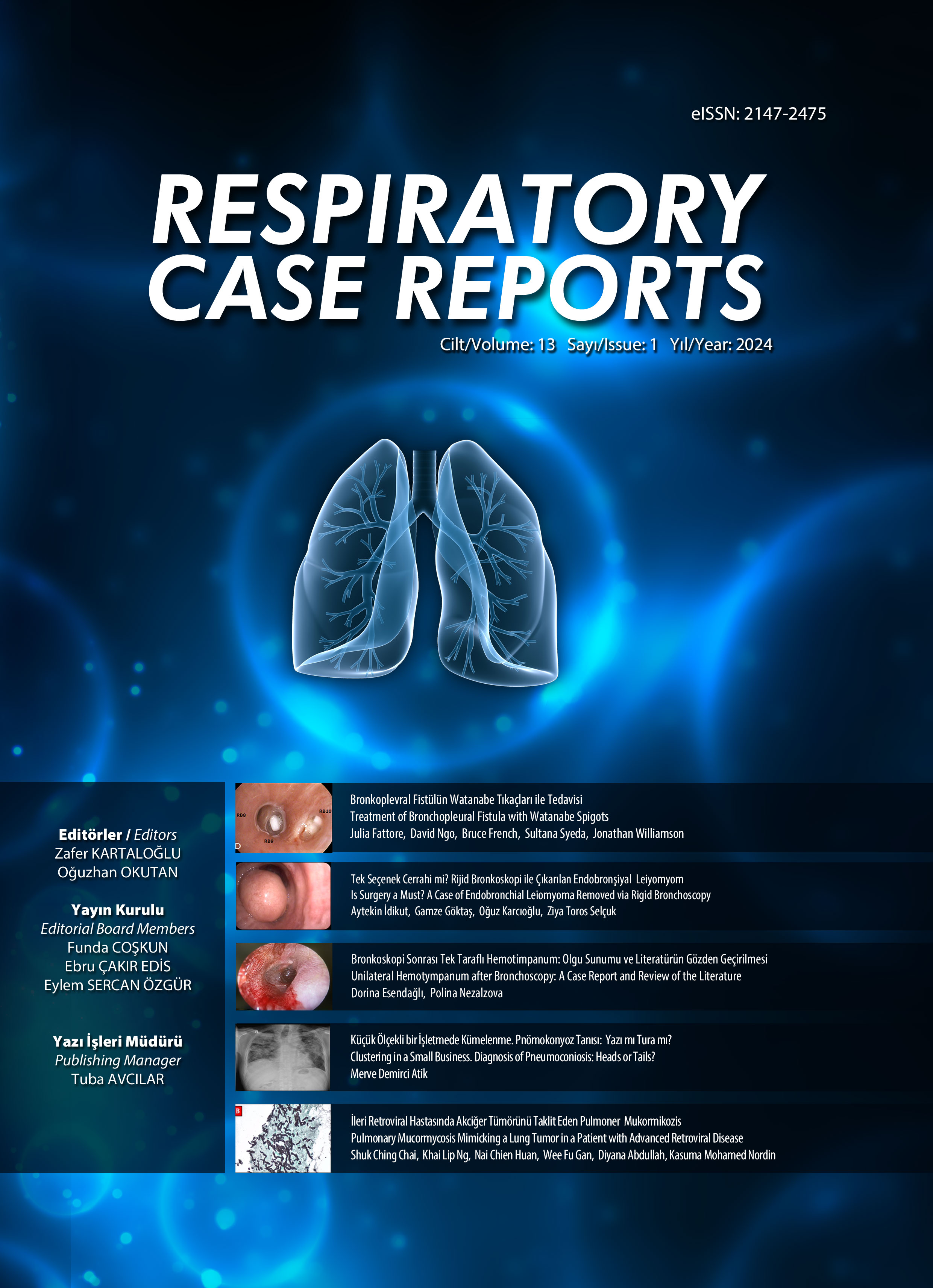
Hydatid Cyst Mimicking High-Risk Pulmonary Embolism: A Case Report
Merve Nur Şahin, Melike Yüksel Yavuz, Ceyda Anar, Onur Turan, Bünyamin SertoğullarındanDepartment of Pulmonology, İzmir Katip Çelebi University, Faculty of Medicine, İzmir, TürkiyePulmonary embolisms take two forms, depending on whether the cause is thrombotic or non-thrombotic. Although emboli with non-thrombotic causes are rare, they should not be ignored during diagnosis. In such cases, a detailed anamnesis should be taken, existing risk factors should be inquired, and additional tests should be made before making a firm diagnosis. In our case, a hydatid cyst embolism that occluded a large part of the pulmonary artery had been identified as a medium–high-risk pulmonary thromboembolism during hospitalization in an external center and thrombolytic treatment had been started. As the patient’s symptoms were identified as unresolved during an outpatient clinic check-up, a hydatid cyst was diagnosed based on the results of a transthoracic fine needle aspiration biopsy and treatment was started.
Keywords: hydatid cyst, pulmonary embolism, pulmonary artery
Yüksek Riskli Pulmoner Emboliyi Taklit Eden Kist Hidatik: Olgu Sunumu
Merve Nur Şahin, Melike Yüksel Yavuz, Ceyda Anar, Onur Turan, Bünyamin Sertoğullarındanİzmir Katip Çelebi Üniversitesi, Tıp Fakültesi, Göğüs Has-talıkları Anabilim Dalı, İzmirPulmoner emboliler, trombotik ve nontrombotik nedenlere bağlı olarak iki gruba ayrılır. Nontrombotik nedenlere bağlı emboliler nadir görülen nedenler olmakla birlikte tanı sırasında gözden kaçırılmamalıdır. Bu gibi durumlarda detaylı anamnez alınmalı, mevcut risk faktörleri sorgulanmalı ve ek tetkikler ile esas tanı konulmalıdır. Pulmoner arterin büyük bir kısmını tıkayan hidatik kist embolisi olan olgumuzda, dış merkezde yatışı sırasında orta-yüksek riskli pulmoner tromboemboli olarak değerlendirilmiş ve trombolitik tedavi verilmiştir. Poliklinik kontrolünde semptomlarının devam etmesi üzerine transtorasik ince iğne aspirasyon biyopsisi ile hidatik kist tanısı konulmuş ve patolojik tanıya göre tedavi verilmiştir.
Anahtar Kelimeler: kist hidatik, pulmoner emboli, pulmoner arter
Manuscript Language: English











